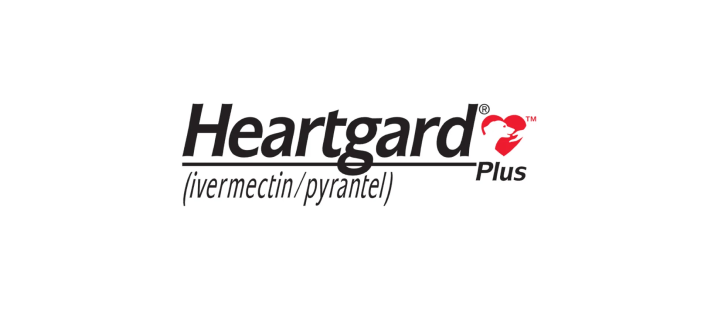Enalapril
Prescription required.
You already have a

subscription.
You already have a

subscription in cart.
Prescription required.
You already have a

subscription.
You already have a

subscription in cart.


What is Enalapril?
Enalapril is used to treat mild, moderate, or severe heart failure and high blood pressure, and is usually used in combination with other medications. Enalapril requires a prescription from your veterinarian, and is sold by the tablet.
For:
Cats and Dogs
Benefits:
- Helps the heart beat more efficiently
- Prevents fluid buildup in the lungs
- Lowers blood pressure
- Improves ability to tolerate exercise
How it Works:
Enalapril is an angiotensin-converting enzyme (ACE) inhibitor. It works by blocking an enzyme in the body that is needed to produce a substance that causes blood vessels to tighten. As a result, the blood vessels relax. This lowers blood pressure and increases the supply of blood and oxygen to the heart.
Cautions:
Do not give your pet potassium supplements unless directed to by your veterinarian. Enalapril may cause birth defects. Do not give to pregnant animals.
Brand Name:
Enacard (Merial), Vasotec (Merck)
Generic Name:
Enalapril
What is Enalapril:
Enalapril belongs to a group of drugs called angiotensin converting enzyme (ACE) inhibitors. Enalapril is used in dogs to treat congestive heart failure and high blood pressure. Enalapril may also be used for purposes other than those listed in this guide.
What should I discuss with my veterinarian before giving Enalapril to my pet:
Tell your veterinarian if your pet has ever had an allergic reaction to enalapril or any other ACE inhibitor such as lisinopril (Prinivil, Zestril), captopril (Capoten), or benazopril (Lotensin) or any other medications. Tell your veterinarian if your pet has kidney or liver disease; heart disease or congestive heart failure; diabetes; lupus, or rheumatoid arthritis. Tell your veterinarian if your pet is pregnant, lactating, or if you intend to breed your pet. Enalapril may cause birth defects or harm a nursing pup.
What is the most important information I should know about Enalapril:
Enalapril is FDA approved for use in dogs only; however, it is a commonly accepted practice to use Enalapril in cats as well. Enalapril is available by prescription as 2.5mg, 5mg, 10mg and 20mg tablets. The usual dose in dogs is 0.25mg per pound once a day. The usual dose in cats is 0.1 to 0.25mg per pound once a day. The dose of Enalapril may require adjustment based on the animal's response to treatment. Enalapril is usually administered with furosemide and digoxin. Tell your veterinarian if your pet is pregnant or if you plan on breeding your pet. Enalapril could cause birth defects. Allow plenty of water for the pet to drink. If the pet becomes dehydrated, this can lead to very low blood pressure, electrolyte disorders, or kidney failure.
How should this medication be given:
Give Enalapril exactly as directed by your veterinarian. Do not give this medication in larger amounts, or take for longer than recommended by your veterinarian. Follow the directions on the prescription label. If you do not understand these directions, ask your pharmacist or veterinarian to explain them to you. Allow plenty of water for the pet to drink. Enalapril may be given with or without food. Periodic liver and kidney function testing may be required by your veterinarian. Store Enalapril at room temperature away from moisture and heat.
What should I avoid while giving Enalapril:
Do not give potassium supplements to your pet unless directed to by your veterinarian.
What are the possible side effects of Enalapril:
If any of the following serious side effects occur, stop using this Enalapril and seek emergency veterinary medical attention; an allergic reaction (swelling of the lips, face, or tongue; difficulty breathing; closing of the throat; or hives). Call your veterinarian if your pet develops any of these serious side effects; fainting; urinating more or less than usual, or not at all; fever, chills; easy bruising, or bleeding; swelling, rapid weight gain. Less serious side effects may be more likely to occur. Continue to use Enalapril, but speak to your veterinarian if your pet experiences; cough; loss of appetite; dizziness, drowsiness; sleep problems; dry mouth; nausea, vomiting, diarrhea; mild itching or skin rash. Side effects other than those listed here may also occur. Talk to your veterinarian about any side effect that seems unusual or bothersome to the animal.
What other drugs will affect Enalapril:
Tell your veterinarian if your pet is being given; a potassium supplement; aspirin or other NSAIDs such as etodolac (EtoGesic), carprofen (Rimadyl), deracoxib (Deramaxx), and others; a diuretic. Talk to your veterinarian or pharmacist before giving any prescription or over the counter medications, including vitamins, minerals, and herbal products.


Enalapril Directions:
- Enalapril is a prescription medication that belongs to a group of drugs called angiotensin converting enzyme (ACE) inhibitors. It is FDA approved for use in dogs only, however it is a commonly accepted practice for veterinarians to prescribe enalapril for cats as well.
- Enalapril is used to treat mild, moderate, or severe heart failure and high blood pressure and is usually used in combination with other medications.
- Tell your veterinarian if your pet is pregnant or if you plan on breeding your pet. Enalapril could cause birth defects.
Allow plenty of water for the pet to drink. Enalapril may be given with or without food. Periodic liver and kidney function testing may be required by your veterinarian.
Enalapril Dosage:
| Weight | Dosage |
|---|---|
| All weights | Usual dosage is 0.1-0.25mg per pound of pet's body weight once daily or as directed by veterinarian |
| Weight | Dosage |
|---|---|
| All weights | Usual dosage is 0.25mg per pound of pet's body weight once daily or as directed by veterinarian |
| Horses | Do not use! |
|---|
Storage:
Store this medication at room temperature away from heat and moisture.


Enalapril Ingredients:
| Active Ingredient (per tablet) | Amount |
|---|---|
| Enalapril Maleate | 2.5 mg |
| Active Ingredient (per tablet) | Amount |
|---|---|
| Enalapril Maleate | 5 mg |
| Active Ingredient (per tablet) | Amount |
|---|---|
| Enalapril Maleate | 10 mg |
| Active Ingredient (per tablet) | Amount |
|---|---|
| Enalapril Maleate | 20 mg |


 Swipe
Swipe











































